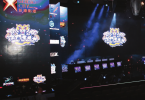This article first appeared in the May/Jun 2016 issue of WGM.
Once considered the realm of teenage boys locked alone in their rooms, video gaming has become big business these days with professional gaming – officially known as eSports – seeing millions of viewers tuning in to watch their favorite teams compete each week. One of those teams is Fnatic, who were among the industry’s first professional eSports teams when they began 12 years ago and continue to pave the way forward. WGM Managing Editor Ben Blaschke takes a closer look at the inner workings of Fnatic as well as the global phenomenon that is eSports.
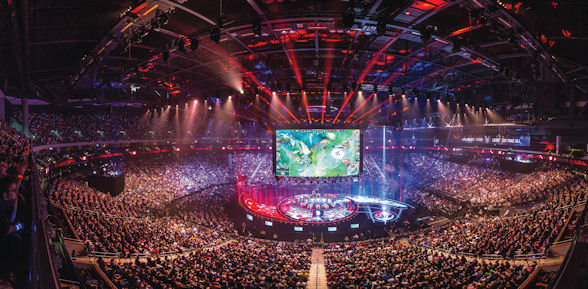
On October 31 last year, the large glass doors circling Berlin’s Mercedes Benz Arena opened to a stampede the likes of which it had never before seen. Donning the jerseys of their favorite teams and players, the 17,000 strong horde flooded the stadium in minutes – stretching the cavernous interior to its limits as they prepared to cheer on their heroes.
But it wasn’t Germany’s most successful basketball team Alba Berlin – who call Mercedes Benz Arena home – that these fans had come to see, nor was it music giants Metallica who were the first to perform inside the arena when it opened in 2008.
Instead, the object of their affections were 10 of the world’s best video game players as professional gaming teams SK Telecom T1 and KOO Tigers went head to head in the final of the 2015 League of Legends World Championship. Clearly video gaming has come a long way since the days of Pac Man and Super Mario Bros!
With elite players being feted like rock stars and earning big money in the process, professional video gaming – or eSports as it is known – has enjoyed a stunning rise over the past five years with more than 3,000 events held across the globe in 2015.
None were as big, however, as the League of Legends World Championship. The culmination of a month of competition in which 16 qualifying teams were gradually whittled down to the final two, it is often described as eSport’s version of the Super Bowl with the 2015 final in Berlin held in the round “arena style” for the first time.
Taking its cue from how traditional sports such as the NFL and NBA present their game day experience, the final saw each player individually introduced to the crowd on stage as part of a spectacular opening ceremony, with the whole event broadcast live on Twitch and YouTube.
And the viewing numbers were staggering.
In total, 36 million unique viewers tuned in to watch the final online – up from 29 million in 2014 and a new record for an eSports event. The 73 games played between the 16 qualifying teams through October amassed an incredible 360 million hours of viewership, almost double the previous record.
Needless to say, eSports is an industry in overdrive and with no signs of slowing down any time soon.
![[b]In Counter-Strike, two teams of five players each face off in a tactical battle for supremacy[/b]](http://www.wgm8.com/wp-content/uploads/2016/04/images_wgm_1041_fnatical-rise-of-esports-2.jpg)
“The numbers are growing and the experience is improving in terms of the production, commentators and experts – it’s becoming more spectator friendly,” says former pro gamer and now Chief Gaming Officer of popular eSports team Fnatic, Patrik Sättermon.
“So I think in a few years’ time we could pass a few prominent sports. In terms of Fnatic’s following on social media I think we will reach the point soon where we’ve got enough followers to sit alongside the top six sides in the Premier League which would put us ahead of many prominent football clubs.”
One of the first professional eSports teams to be formed in Europe back in 2004, Fnatic has not only enjoyed a front row seat to the industry’s explosive growth but has also played its own key role in establishing a framework for others to follow. This has been particularly evident in regards to player development. Not content to simply identify and recruit the best emerging eSports talent, Fnatic houses its teams in one of two “gaming houses” they’ve set up in Berlin and Kuala Lumpur where their innovative training techniques are put into practice.
![[b]Patrik Sättermon[/b]](http://www.wgm8.com/wp-content/uploads/2016/04/images_wgm_1041_fnatical-rise-of-esports-3.jpg)
It’s a high stakes business where reputations and riches go on the line each and every time players sit down at their consoles.
Before we delve any deeper however, let’s take a quick look at the games that have made eSports possible.
THE GAMES
To understand the eSports phenomenon, you first need to understand the games that have been at the heart of the industry’s ascension. Generally classified into a small handful of genres, these games offer a level of depth and complexity that sets them apart from the single player platform, puzzle and adventure titles most people grew up with.
They also have a heavy reliance on technology, which is why the evolution of eSports has coincided with the introduction of the internet and subsequent advances that have connected the world.
For the most part, eSports games are focussed into three main genres – first-person shooters (FPS), real time strategy (RTS) and multiplayer online battle arena (MOBA) games.
The game generally credited with being the world’s first eSports title was Quake, a FPS released in 1996 in which players had to navigate their way through various mazes to reach the next level, battling monsters and overcoming obstacles along the way.
![[b]League of Legends is the most played game in the world[/b]](http://www.wgm8.com/wp-content/uploads/2016/04/images_wgm_1041_fnatical-rise-of-esports-4.jpg)
The competitive element, however, emerged through its online multiplayer option whereby players could battle a single opponent or team up with someone else to battle a rival team. With sound strategy playing an important role, Quake resulted in the first ever eSports tournament in 1997.
FPS games dominated the early years of eSports with Counter-Strike, Call of Duty and Halo among the legendary titles that are still widely played today. They also embraced the teams concept, adding a whole new level of complexity to their gameplay. In Counter-Strike, for example, teams of five compete over the course of 30 rounds – 15 rounds playing as the terrorist side and 15 as the counter-terrorist side,
When playing as the terrorist side, the team’s objective is to plant a bomb at one of two designated bomb sites within the allotted time, while the aim when on the counter-terrorist side is to either stop the bomb being planted or defuse it. Both sides can also win the round by killing all five of their opponents.
The game is highly tactical – requiring all five members to work closely together to achieve their goals – while players also need to memorize the various maps that can be used as the battlefield in each round.
RTS games are generally played by one competitor against another rather than in teams. By far the most popular RTS game used for eSports is StarCraft II which was released in 2010.
In StarCraft II, each player controls one of three possible species – Terrans, Zerg or Protoss – with the basic goal being to build an army and destroy all of your opponent’s buildings.
The players start with a main base each and a small group of workers who mine minerals and gas. These resources can then be used to build an army and expand the empire.
![[b]Starcraft II sees two competing players building an army with which to destroy their opponent's base[/b]](http://www.wgm8.com/wp-content/uploads/2016/04/images_wgm_1041_fnatical-rise-of-esports-5.jpg)
More than simply a race against time however, StarCraft II is very much like a game of chess with each player having to carefully plan ahead while keeping a close eye on the actions of their opponent. As well as employing a range of tactics such as sending in soldier units to interrupt an opponent’s ability to mine resources, players must also build the right type of army to combat the units their opponent has chosen to build.
The best players are therefore those who are able to both implement a sound strategy of their own while understanding what their opponent is trying to achieve with each action and respond accordingly.
MOBA games have emerged as the more dominant genre in eSports over the past five years. They are similar to RTS in style but are team based rather than individual with five players per team and each team member controlling one character.
Popular games include the DOTA franchise, Smite and the aforementioned League of Legends which broke so many eSports records in 2015. In fact, worldwide there are currently more than 2,700 professional League of Legends players and around 1,260 annual tournaments!
It was none other than Fnatic that won the first ever League of Legends World Championship in 2011 and they have continued to be a global powerhouse, reaching the semi-finals of the 2015 event before falling to KOO Tigers.
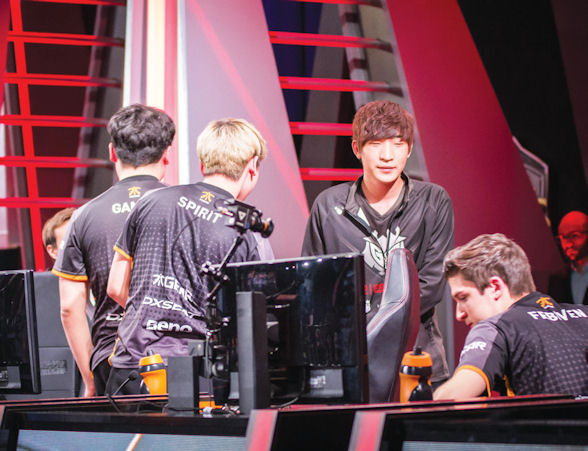
The game sees two teams of five players each controlling a character, called a Champion, with the ultimate goal being to destroy the opposing team’s Nexus – located at the rear of their base. Much like FPS games, teamwork and each player understanding the precise role and abilities of their Champion are vital in order to succeed.
Similarly, as in RTS games, players need to keep a close eye on the actions of their opponents and respond accordingly.
League of Legends is currently the most played game in the world with a reported 27 million unique users every day and an astonishing 67 million users per month!
FNATIC
Formed in 2004 just as eSports were establishing themselves across parts of Europe and Asia, Fnatic has always been an organization aimed at innovation. They were, for example, the first eSports team to target a global identity rather than be typecast as specifically a European or Asian outfit.
“We started in Europe with games like Quake and Unreal but we always planned to move into more games and a more global approach,” explains Sättermon.
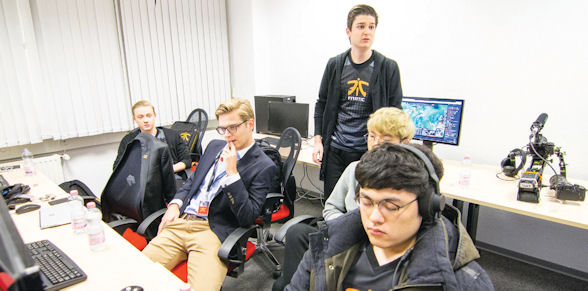
“Comparing Fnatic to many of the other eSports organizations out there, we don’t really push ourselves with a very strong UK identity or anything like that. In fact, we try to remain as an international organization. We do have a base in London – that’s where our headquarters are – but we also have gaming houses in Berlin and Kuala Lumpur.
“Today we have 25 gamers but I think we have approximately 15 countries represented in our organization. Primarily we do have players in Europe but we also have representation in South East Asia which is the Kuala Lumpur team.
“All in all we’re a global organization.”
Fnatic has led the way when it comes to the preparation of its players. More than simply spending countless hours practicing in front of a monitor, the rapidly improving level of competition at the elite level of eSports means that teams are now delving into both the physical and mental side of performance. That means everything from mental coaches and psychologists to various team management roles and even nutritionists.
“It’s just so important,” explains Sättermon. “We think we provide some of the best conditions for our players in terms of finances and gaming houses but also on the team structure side.
“We’re quite involved in how we train our coaches and the whole organization. We focus a lot on the performance side.
“But there is so much to learn because eSports … you can’t really run to the library and read about how to do it. It’s all new so it’s trial and error for us.”
The scenario is similar for how Fnatic find their players. Once upon a time attracting the best gamers was easy, but with new teams popping up all the time – many of them with cash to burn – long-term planning has become crucial.
“That process has altered over the years as well,” Sättermon explains. “At one point with less competition it was easy to add new players to a roster because we could outbid our competitors, we played them on the professional circuit and we had the best team so that resonated and reflected on our ability to recruit.
![[b]Fnatic's European team in action[/b]](http://www.wgm8.com/wp-content/uploads/2016/04/images_wgm_1041_fnatical-rise-of-esports-8.jpg)
“But with an increased amount of competition globally the approach has changed. Now we need to have scouts, we need to have an idea of what we’re going to do in 10 or 12 months’ time by keeping track of the next tier of players coming through. We do rely a lot on our team management and sometimes the players themselves to help identify them.
“The other thing is that while most sports are regulated by organizations so that teams are somewhat protected, in eSports it is like a no man’s land – there is no designated off-season or trading period. You have to be extremely proactive and innovative in how you recruit players.
“It’s super tough though – there are a lot of bidding wars going on and we do see investment groups and media companies coming in and just throwing money at the players. To a degree that is not necessarily sustainable and in a year they might actually struggle to justify the investment so we try to build something up organically.
“It helps having a good reputation as well as providing good conditions. I think we’ve always been good at picking up young talent and making them the next generation’s stars.”
THE PLAYERS
So what does it take to become a professional gamer and what does life look like for those who get there?
“You have to sacrifice almost everything,” says Djardel Jicko b. Mampusti – better known as “DJ” – a product of the Philippines and a member of Fnatic’s Kuala Lumpur team. Although just 21 years of age, the demands of the profession are weighing heavily on “DJ” and he is already thinking of retiring from top-tier gaming in a year or so.
Similarly, teammate Chong Xin “Ohaiyo” Khoo admits it can be difficult seeing so little of his family.
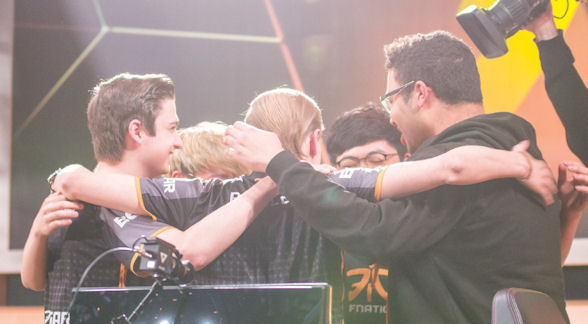
“I have to spend so much time everyday trying to hone my skills that I often end up missing important family events,” he explains.
“Part of the reason is because I am overseas a lot. This career is extremely time consuming and at the moment we all need to focus on our career to be successful.”
Exactly what is required of any team depends largely on which game they specialize in. Some games, such as League of Legends, have professional circuits organized by the game developer themselves. Teams compete in the pro league each Thursday and Friday with the goal of qualifying for the World Finals in October.
Other games such as Counter-Strike are far less structured with a number of companies running events across the globe. Fnatic estimates that its Counter-Strike team is on the road for anywhere between 130 and 140 days a year as a result.
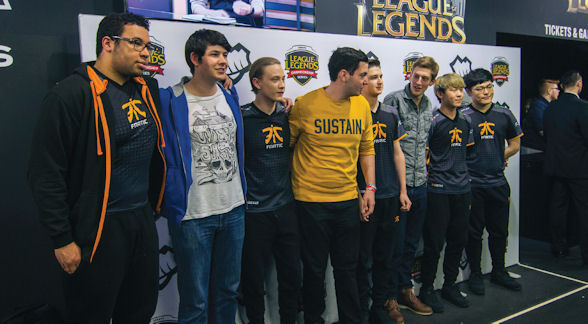
The great irony of eSports is that while players don’t suffer the same physical stresses that come with traditional sports such as football, gridiron, badminton or tennis, their careers actually tend to be shorter than all of them due to the intense mental application required.
Few compete past 30.
“It’s a lot of hard work and it is accumulated stress you build up,” offers Sättermon, who was 27 when he stopped playing.
“You don’t have those same physical limitations you do in other sports where your body gets tired after a couple of hours of training. In eSports you can spend upwards of 12 hours practicing every day – plus there is pressure from the fans and other players to go with that.
“The feedback on a player is always out there. It’s a digital sport so it’s very easy to prove and show the statistics of a game. You can get all the facts about a player’s performance. And for someone in their 20s reading all those opinions and comments about them, it’s quite tough. I mean, this is a super competitive sport and you can be thrown off the team tomorrow if you’re not performing.
“There is a lot of stress and tension and that can hit you at quite a young age.
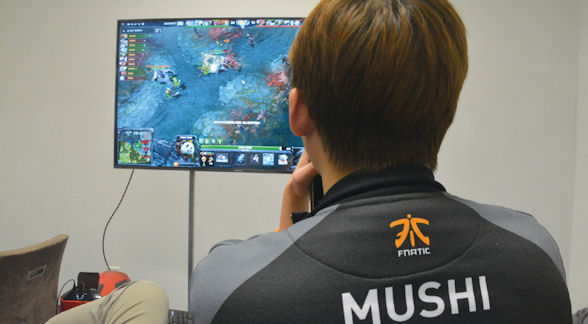
“So in regards to the individual, it’s very much about their mindset.
“Obviously eSports is a game of the mind and it is also a team-based game that depends very much how you socialise. People might think of gamers as being in the basement playing but it’s very much a social one – how do you communicate, how do you interact with your teammates, how do you get affected by success or defeat?
“What makes a good player is having a strong mindset – the ability to stay on top of the curve. And when it comes to the team, harmony is key. That comes down to the five individuals as well as team management ensuring they have good social activities and healthy practices.”
While the pressure can be crushing, there is of course considerable upside for those who succeed. The money, for one, can be very good – Dota 2’s The International 2015 event boasted total prize money of almost US$18.5 million with the winning team collecting around US$6.6 million for their efforts.
There is also the fame aspect which many players revel in and can ultimately lead to a further career in eSports once their playing days come to an end, as was the case with Sättermon.
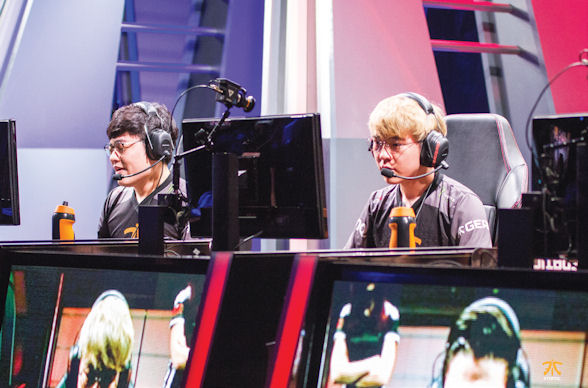
And because the career window of gamers is so short, elite eSports teams such as Fnatic leave no stone unturned in ensuring their players have everything they need to maximize performance while at their peak.
That’s why, having set up a “gaming house” in Berlin where their European team gathers to prepare for major events, Fnatic has recently done the same for its Kuala Lumpur contingent.
“We have a six bedroom house that we’re renting about 30 minutes from downtown Kuala Lumpur,” Sättermon says proudly.
“The guys have a gym, a pool and so forth. The team manager works with them, there is a person doing their food – it’s quite a nice life these guys are having. The team house is something I think you do need to have because it’s a team based game.
“Obviously that comes at a fairly high cost for the players’ lifestyle with them all staying together, playing eight hours a day and then spending all their spare time with their teammates too, but we find it to be the best way to replicate competing together.”
It is also, according to “Ohaiyo”, the best way to build trust.
![[b]Dallas Mavericks owner Mark Cuban recently invested in eSports[/b]](http://www.wgm8.com/wp-content/uploads/2016/04/images_wgm_1041_fnatical-rise-of-esports-12.jpg)
“I think trust is a very important thing in a team,” he explains. “I have played in many teams – some I trust more than the others – and in a team where we trust each other the game always seems more fluid. There is a lot more communication going on.
“To achieve this you also need the right teammates who are willing to listen and adapt to the team’s style of play because one thorn will almost always tear the team apart.”
WHERE TO NEXT FOR ESPORTS?
Given the stunning surge in popularity of eSports over the past few years, it seems even the sky is no limit for this booming industry.
Consider this – in 2010 there were 786 professional gamers around the world. Today there are around 9,000 at various levels. Total prize money awarded from eSports events in 2015 was US$61 million, which represented a staggering 70 percent rise from 12 months earlier.
And having seen the global eSports market climb to a value of US$749 million at the start of 2016, it is forecast that this figure will hit a whopping US$1.9 billion within the next two years as more and more advertisers jump on board.
It’s little wonder that traditional sports owners have begun staking their claim. Last year Mark Cuban, owner of the NBA’s Dallas Mavericks, invested in emerging eSports betting platform Unikrn and has proclaimed his desire to start his own League of Legends team similar to Fnatic.
Another start-up eSports company Skillz, which specializes in real money mobile gaming, is funded by a group that includes Milwaukee Bucks co-owner Marc Lasry and The Kraft Group who own the NFL’s New England Patriots.
No doubt they are aware that more people around the world now play video games (1.7 billion) than play traditional sports (1.6 billion) – a huge potential audience as yet largely untapped.
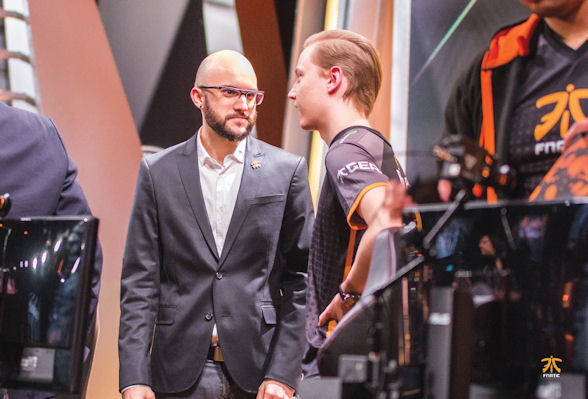
“You have to stay proactive, learn from what you are doing and realize we are all innovating,” says Sättermon. “We are creating the sport as we go.
“It’s exciting times for eSports because the past year is when the spotlight has really increased. New investors have started coming in, there are sports teams looking to pick up their own teams … from Fnatic’s perspective there is a lot of work to be done to remain in the position we are in today.”
With that in mind, Fnatic recently launched its range of professional eSports equipment called Fnatic Gear with merchandise including everything from keyboards, monitors and chairs to key rings, water bottles, wristbands and various items of apparel.
It’s all about staying ahead of the curve.
“In terms of where we’re heading, we try to be at the forefront in terms of representing eSports as a lifestyle,” Sättermon explains. “So while at our core we are a gaming team, we also try and interact and provide things for the global fan base – not just Fnatic fans but eSports fans in general.
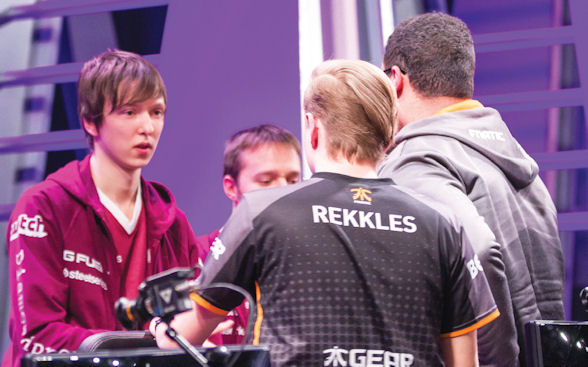
“In the future we will spread our presence into new regions like North America and Latin America because eSports is super global. It’s borderless. Other than needing your computer, it’s quite affordable and seamless to get involved because you can do it from a remote location and play against people from around the world. That’s just super fascinating.
“And I think as an organization we have benefited from our early success, so just as a young footballer dreams of playing for Manchester United, that’s the position we have established at Fnatic. We never want to lose that.”



